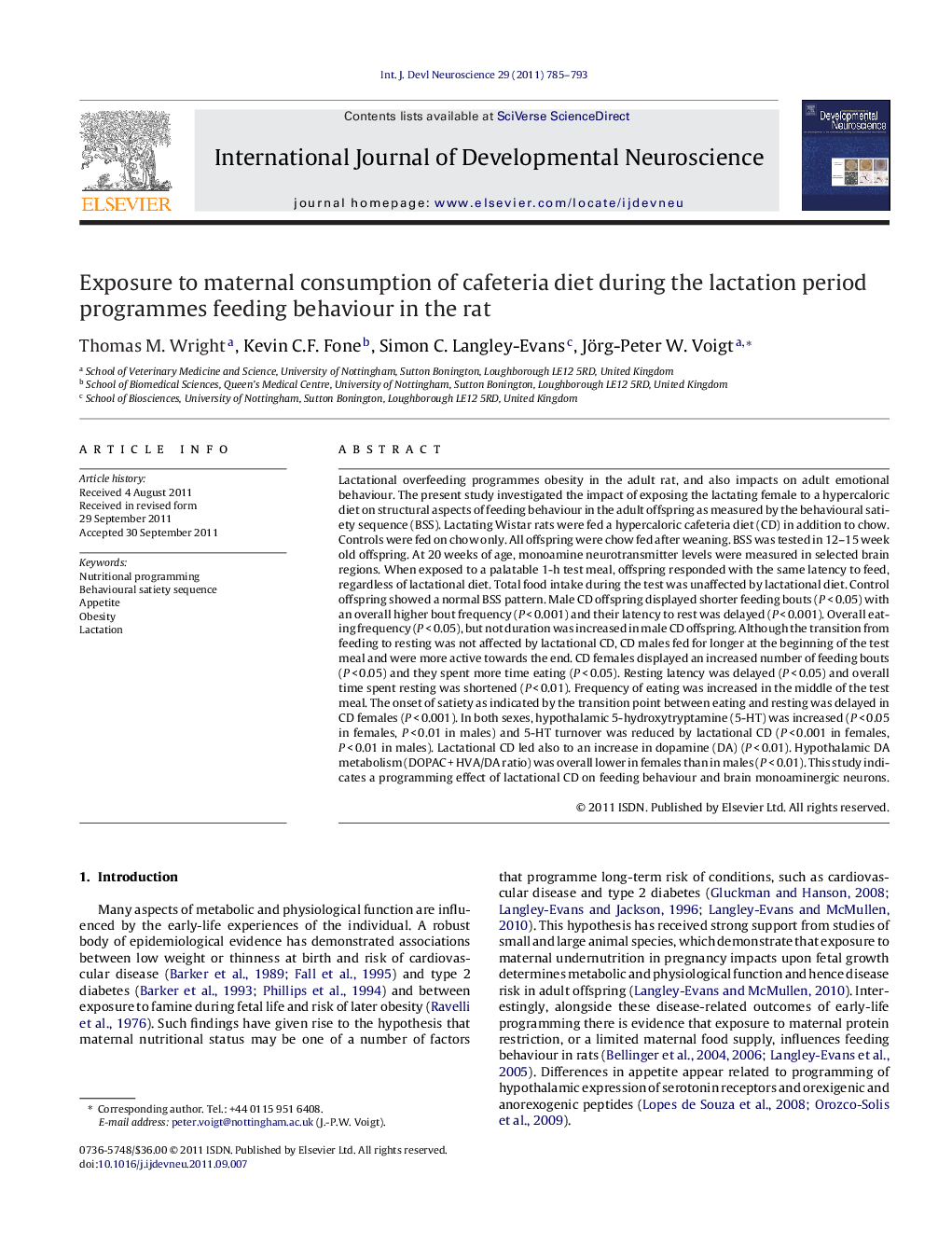| Article ID | Journal | Published Year | Pages | File Type |
|---|---|---|---|---|
| 2786308 | International Journal of Developmental Neuroscience | 2011 | 9 Pages |
Lactational overfeeding programmes obesity in the adult rat, and also impacts on adult emotional behaviour. The present study investigated the impact of exposing the lactating female to a hypercaloric diet on structural aspects of feeding behaviour in the adult offspring as measured by the behavioural satiety sequence (BSS). Lactating Wistar rats were fed a hypercaloric cafeteria diet (CD) in addition to chow. Controls were fed on chow only. All offspring were chow fed after weaning. BSS was tested in 12–15 week old offspring. At 20 weeks of age, monoamine neurotransmitter levels were measured in selected brain regions. When exposed to a palatable 1-h test meal, offspring responded with the same latency to feed, regardless of lactational diet. Total food intake during the test was unaffected by lactational diet. Control offspring showed a normal BSS pattern. Male CD offspring displayed shorter feeding bouts (P < 0.05) with an overall higher bout frequency (P < 0.001) and their latency to rest was delayed (P < 0.001). Overall eating frequency (P < 0.05), but not duration was increased in male CD offspring. Although the transition from feeding to resting was not affected by lactational CD, CD males fed for longer at the beginning of the test meal and were more active towards the end. CD females displayed an increased number of feeding bouts (P < 0.05) and they spent more time eating (P < 0.05). Resting latency was delayed (P < 0.05) and overall time spent resting was shortened (P < 0.01). Frequency of eating was increased in the middle of the test meal. The onset of satiety as indicated by the transition point between eating and resting was delayed in CD females (P < 0.001). In both sexes, hypothalamic 5-hydroxytryptamine (5-HT) was increased (P < 0.05 in females, P < 0.01 in males) and 5-HT turnover was reduced by lactational CD (P < 0.001 in females, P < 0.01 in males). Lactational CD led also to an increase in dopamine (DA) (P < 0.01). Hypothalamic DA metabolism (DOPAC + HVA/DA ratio) was overall lower in females than in males (P < 0.01). This study indicates a programming effect of lactational CD on feeding behaviour and brain monoaminergic neurons.
► Nutritional programming of feeding behaviour was investigated. ► Rats were subjected to a lactational hypercaloric cafeteria diet. ► In adult age, offspring were subjected to behavioural satiety sequence testing. ► Males showed a delayed resting during the test meal, females a delayed onset of satiety. ► Hypothalamic serotonin turnover was reduced in both sexes.
